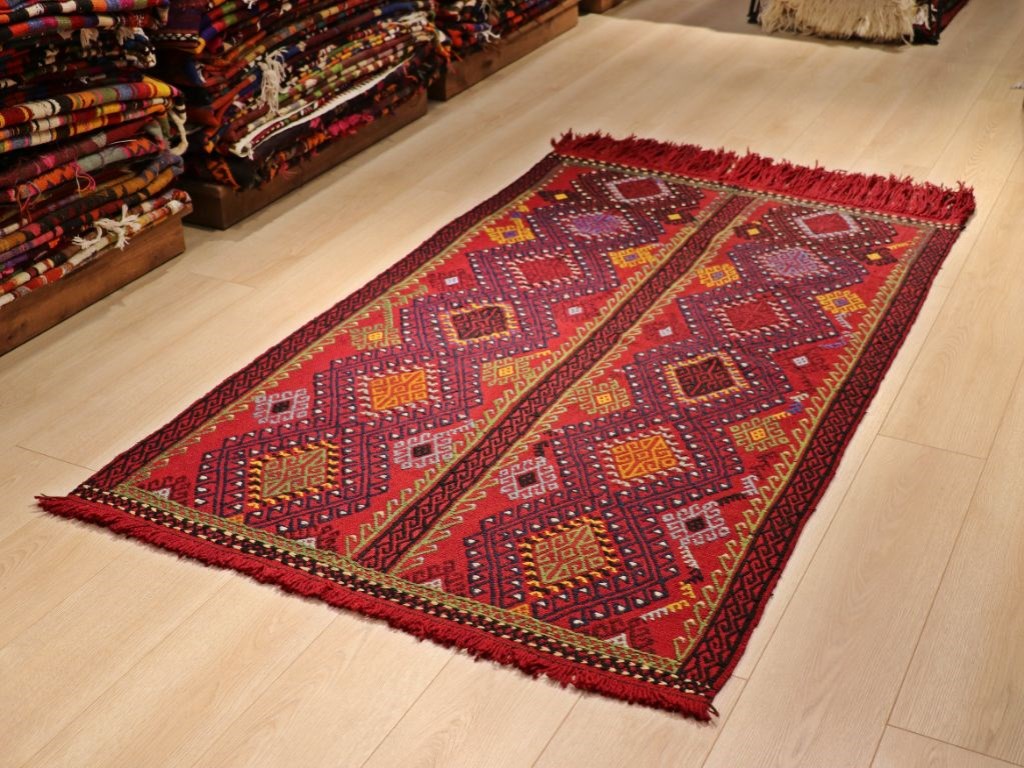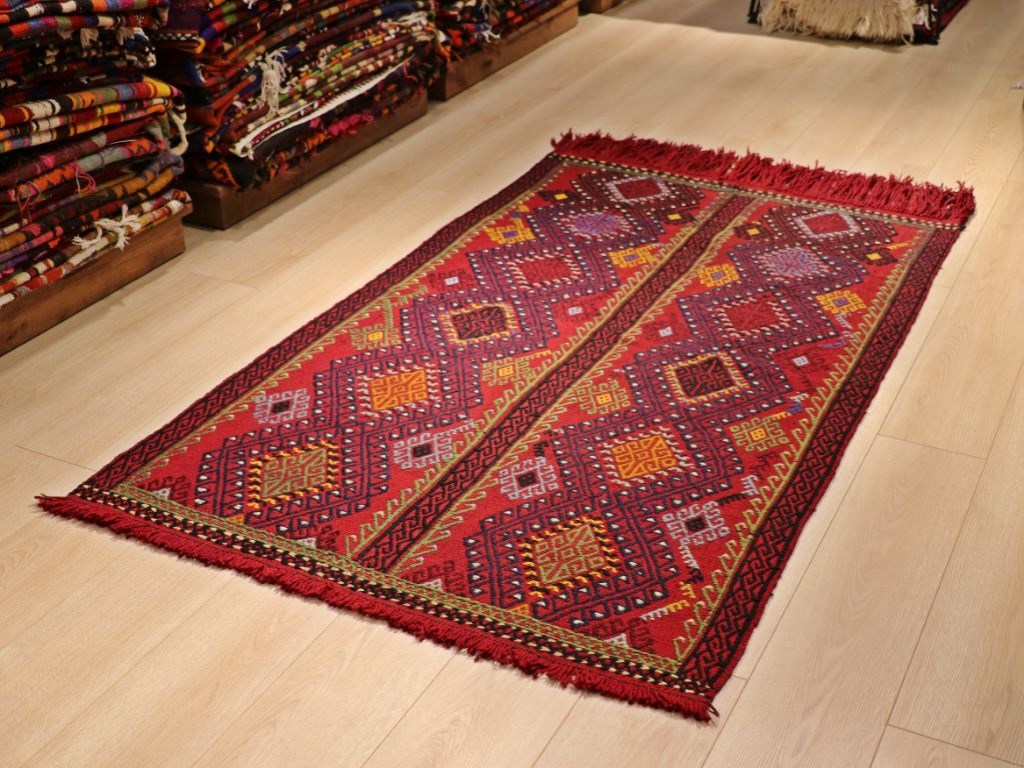The Millennial Art Of Kilim Weaving

Kilim weaving is a culture that has been going on for millennials. The kilim is an ancestral weaving technique, known for its beautiful abstract and colorful patterns. If we use it today, especially in carpets, the weaving obtained was initially used by the nomads as cover, wall hanging, bag … Light on a tradition that now dresses our interiors.
In Turkish, “Kilim” means weaving. The technique used to make kilims is the same as for tapestry. The design is embroidered flat on a loom, instead of being knotted, for a softer and lighter result. The method being artisanal, each carpet is unique.

The kilim is the most common and oldest of the weaving methods. It is also one of the simplest: Warp threads, i.e., those placed vertically and often made of cotton, accommodate the colored and horizontal weft threads, which pass over and under to create the patterns. The weft is mostly made of spun wool.
This particular method seems to originate in Anatolia: Vestiges of this art, dating back more than 5,000 years, have been found in the region. The nomadic tradition then developed throughout the Near and Middle East, as well as in Asia.
An art of patience
Kilims are not originally made for commercial purposes; they represent both the memory and the identity of the people who weave them. Indeed, each nomadic and semi-nomadic group has its own style. Depending on the region, the fibers are very colorful or soberer, the patterns sometimes worked, sometimes refined. The colors and the decorations, therefore, make it possible to determine the origin of each piece fairly precisely.
The techniques of spinning wool, weaving, and making vegetable, mineral, and animal dyes have remained the same since the creation of kilims. Women are responsible for the lengthy process.
The design of the kilim, by its manufacturing method, is more rudimentary and abstract than that of knotted stitch weavings. Because of the double weft, which gives it a tight weaving, the carpet is very resistant, but has little grip on hard floors: remember to place a non-slip thickness underneath.
Kilims today
The late Western craze for the kilim preserved it from possible commercial influences and allowed it to retain an absolute authenticity. Sheep wool and cotton are still used to make warp and weft threads. The appearance of the first chemical dyes at the end of the 19th century changed the tradition a little. However: the fibers were sometimes dyed with synthetic products, which withstood the test of time better.
A large weaving produced without chemical dyes is therefore called a kilim of collection. Indeed, the value of a kilim is not necessarily due to its age, but rather to the natural colors and the complexity of its geometric patterns. The kilims, new or older, give a unique and ethnic touch to any interior.
History of Turkish kilims from Bayat
The Oghuz Turks of western Turkey have maintained the tradition of weaving carpets and kilims, thousands of years old, with the support of the district governorate of Baya.
The Bayat carpet, made from sheep wool and madder root with traditional patterns, reflects the richness of Anatolian culture.
The special herbs for the carpet are collected in the mountains and boiled with simple ropes in the same container to obtain the natural color. Later, the single strings are dried on a hanger. These ropes are used to make traditional handmade carpets. Kilim weaving is the primary source of life for the inhabitants of the Bayat district.
Ahmet Nuri Demir, deputy governor of the Bayat district, says that kilim weaving was a tradition for all Turkish tribes, but that it had been developed mainly in the Bayat tribe.
“The woolen threads are transformed into craft carpets in the hands of the women of Bayat. The most important characteristic of Bayat kilims is that they last a long time. They are challenging to weave. We only have 6-7 weavers at the moment. We only have one madder root painter. We are trying to increase these numbers.” he told.
Demir also adds that the patterns on the rugs reflect the emotions of the women who made the kilims.
If you wish to buy Carpets and Kilims from Turkey, please do not hesitate to contact us by mail at [email protected] or to call us at +90 532 361 5149. We can help you to get in direct contact with producers or provide you everything that you need.


